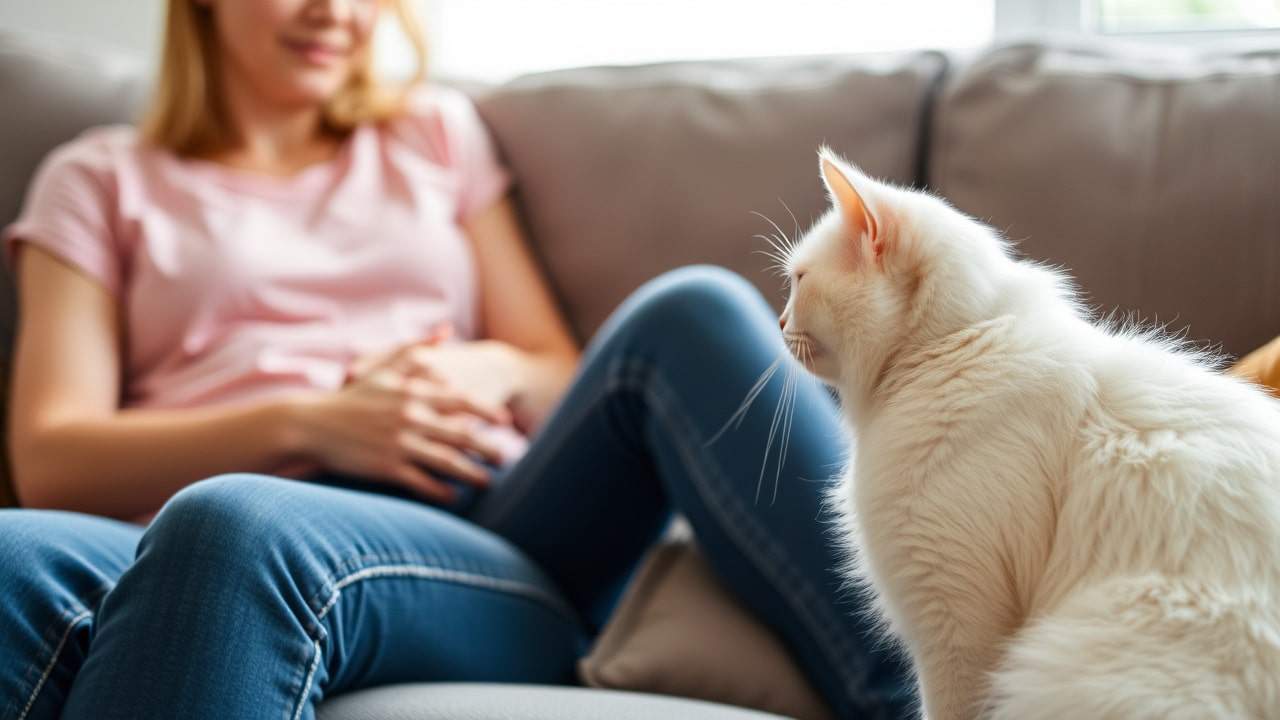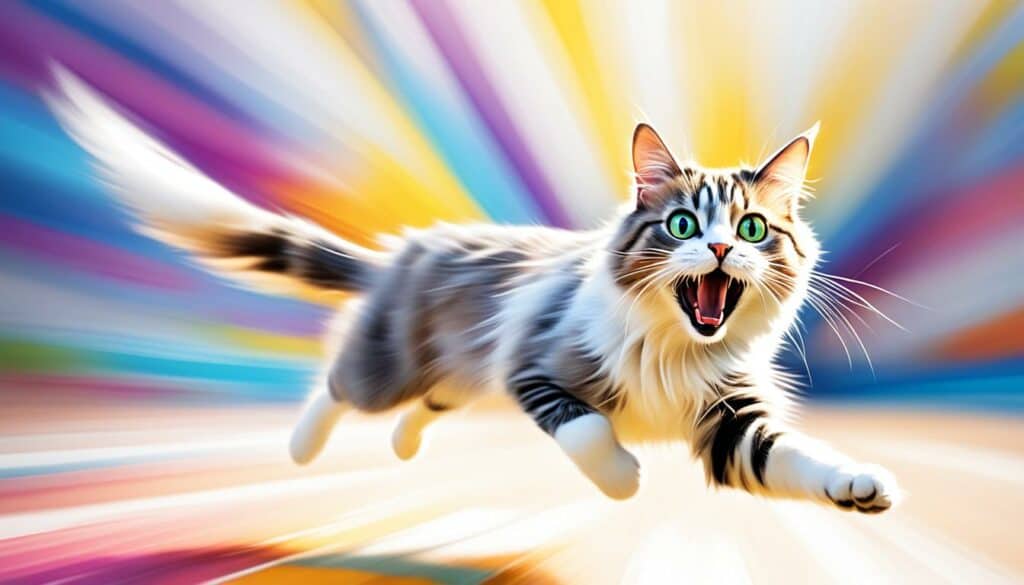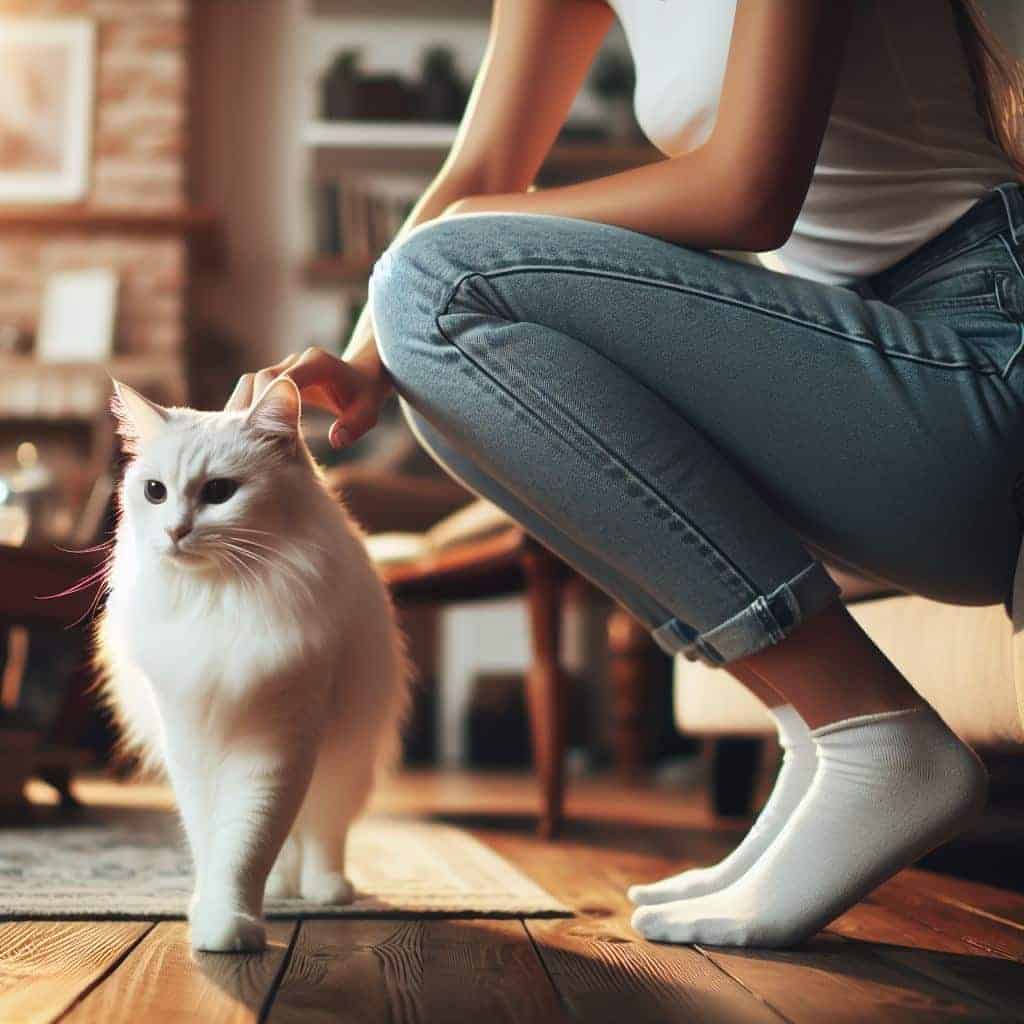
Ever wondered why do cats sit and stare at you? This is the very question I pondered a lot in the past. Cats have a knack for capturing our attention with their intense gaze. This behavior isn’t just random; it’s a fascinating mix of curiosity, communication, and instinct.
Understanding these feline quirks can deepen the bond between you and your furry friends. Cats, with their mysterious behaviors, often use staring to express emotions or intentions.
Recognizing these signals is key to a harmonious relationship. 💕
Understanding Why Cats Sit and Stare
Why do cats sit and stare at us with those mesmerizing eyes? Are you itching to uncover the mysteries behind this behavior?
Let’s dive into what makes cats tick.
The Nature of Cat Behavior
Instinctual Behaviors
Cats have instincts that drive their actions. As natural predators, cats rely on keen observation.
A cat’s stare can mean it is assessing the environment for any changes or potential threats. This behavior links back to survival instincts. Different cat breeds may exhibit varying levels of this instinctual behavior.
Communication Methods
Cats communicate in unique ways. A stare might mean a cat wants to convey something important. Cats use eye contact to express emotions or needs.
Sometimes, a cat’s gaze shows affection or trust.
Understanding these signals helps strengthen our bond with them.
Environmental Influences
Influence of Surroundings
A cat’s environment plays a big role in its behavior – changes in their surroundings can make them more alert. E.g. New furniture or visitors might cause a cat to sit and stare more often.
Cats often need time to adjust to new environments.
Impact of Routine Changes
Routine changes can affect a cat’s behavior. A shift in feeding times or daily activities might lead to more staring. 😳
Cats thrive on consistency hence maintaining a regular schedule helps keep a cat calm and content.
Reasons Explained: Why Do Cats Sit and Stare at You?
Ever caught yourself wondering why your cat is staring at you?
Let’s dive into some reasons explained for this intriguing behavior.
Curiosity and Observation
Cats are naturally curious creatures. Pumpkin Care, an expert in cat behavior, mentions that cats will often stare to get a feel for what’s happening around them.
Interest in Owner’s Actions
Cats love watching what we do. A cat might find our actions fascinating. Whether you’re cooking or reading, your cat might be trying to figure out your next move. This curiosity stems from their instinctual need to understand their environment.
Monitoring Environment
Cats are always on alert. Catching your cat staring out the window? Your kitty could be keeping an eye on birds or other animals. This behavior links back to their survival instincts as natural predators.
Seeking Attention
Sometimes, a cat is staring because it wants something from you. This could be a request for interaction or something more specific.
Desire for Interaction
Your cat might want to play or cuddle. A direct stare can be a way of saying, “Hey, pay attention to me!” Cats often use eye contact to communicate their needs.
Request for Food or Play
A hungry kitty might stare to remind you it’s time for dinner. If your cat is staring near its toys, it might be hinting at playtime. Recognizing these cues helps strengthen the bond between you and your pet.
Health and Comfort
Cat staring can also relate to health and comfort. Understanding these signals can ensure your kitty’s well-being.
Signs of Discomfort
A cat might stare if something feels off. Changes in behavior, like increased staring, could indicate discomfort. Regular health checks help catch any issues early.
Checking for the Owner’s Well-being
Cats sometimes stare to check on us. A cat might be ensuring you’re okay, especially if you’ve been unwell. This behavior shows the close bond between you and your furry friend.
Interpreting Cat Staring: What It Means
Body Language Cues
Cats use body language to express a range of emotions. Understanding these cues can help decode your cat’s intentions.
Tail and Ear Positions
A cat’s tail and ears reveal a lot about its mood. A high, relaxed tail often indicates confidence. Ears perked forward show curiosity. Flattened ears might suggest fear or aggression. Observing these signals helps interpret what your cat feels.
Eye Movements
Eye movements play a crucial role in cat communication. Slow blinking often signifies trust and affection. Wide eyes may indicate surprise or excitement. Narrowed eyes can mean contentment or relaxation. Paying attention to these subtle cues enhances your understanding of your cat’s feelings.
Contextual Clues
Context matters when interpreting a cat’s stare. The situation provides valuable insights into what your cat might be trying to convey.
Time of Day
The time of day can influence a cat’s behavior. Cats are crepuscular, meaning they are most active during dawn and dusk. A cat staring in the morning might be ready for breakfast. In the evening, your cat might seek playtime or companionship.
Recent Activities
Recent activities also impact a cat’s behavior. If you’ve just returned home, your cat might stare to reconnect. After feeding, a cat might gaze contentedly. Understanding the context helps you respond appropriately to your cat’s needs.
How to Respond to Your Cat’s Stare
Ever wondered what to do when your cat stares at you with those big, curious eyes? I know I have.
Understanding how to respond can strengthen the bond between you and your feline friend.
Let’s dive into some ways to engage with your cat and ensure comfort and health.
Engaging with Your Cat
Interactive Play
Cats love to play, and interactive play is a great way to respond to a staring cat. I recently BOUGHT TONS OF INTERACTIVE toys for my cat, Doofy, and it made a world of difference.
When Doofy stares, I grab a toy and start a game. This not only satisfies his curiosity but also provides much-needed exercise. A simple feather wand or laser pointer can work wonders.
Here’s a quick list of interactive toys you might consider:
-
Feather wands
-
Laser pointers
-
Toy mice
-
Puzzle feeders
Verbal Communication
Talking to your cat might seem odd, but cats respond well to verbal cues. When Doofy stares, I use a gentle voice to communicate. Saying Doofy’s name or using phrases like “What’s up, Doofy?” can make him feel acknowledged.
Cats often respond with a soft chirrups and chatter cat sound, showing they appreciate the interaction.
Ensuring Comfort and Health
Regular Health Checks
Regular health checks are important for keeping your cat happy and healthy. If Doofy’s staring ever becomes unusual, I would schedule a vet visit to have peace of mind.
Cat insurance can help cover unexpected costs, making regular check-ups more affordable. Health checks ensure that your cat isn’t staring due to discomfort or illness.
This can help you keep track of essential health checks:
|
Health Check |
Frequency |
Importance |
|---|---|---|
|
Dental Exam |
Twice a year |
Prevents dental issues |
|
Weight Monitoring |
Monthly |
Maintains healthy weight |
|
Vaccinations |
Annually |
Protects against diseases |
|
Parasite Control |
Every 3 months |
Prevents fleas and worms |
Creating a Safe Environment
Creating a safe environment helps reduce stress and anxiety in cats. Recently, I bought a huge cat tree for Doofy, it provided him with a safe space to climb and relax.
Keeping cats cool in summer is essential, so I ensure Doofy has access to shaded areas and fresh water. A safe environment reduces the likelihood of staring due to stress.
When to Seek Professional Advice
Ever noticed your cat acting a bit off? I remember when Doofy started staring more than usual. I wondered if something was wrong.
Sometimes, cats need professional help to understand what’s happening.
Persistent Unusual Behavior
Cats can show signs of stress or anxiety through their behavior. An anxious cat behavior might include excessive staring, hiding, or aggression.
If you see these signs, it might be time to consult an expert.
Signs of Stress or Anxiety
Stress in cats can manifest in various ways. Look for changes like excessive grooming or vocalization. A dominant and anxious cat might also become aggressive.
Recognizing these signs early helps prevent cat separation anxiety.
Changes in Eating or Sleeping Patterns
Notice any changes in your cat’s eating or sleeping habits? Doofy once started eating less and sleeping more. These changes can indicate underlying issues.
Monitoring these patterns is important for cat care.
Consulting a Veterinarian
A vet can provide valuable insights into your cat’s health.
3 months ago, I took Doofy to the vet when I noticed unusual behavior – the vet found out one of his eyes was slightly infected. Too much staring perhaps. 😁
Health Assessments
Regular health assessments are essential. A vet can check for physical issues causing discomfort.
This step ensures your cat isn’t in pain.
|
Health Check |
Frequency |
|---|---|
|
Dental Exam |
Twice a year |
|
Weight Monitoring |
Monthly |
|
Vaccinations |
Annually |
|
Parasite Control |
Every 3 months |
Behavioral Consultations
Sometimes, a cat behavior expert cat can help. A qualified behaviorist can address complex issues. If your cat acts crazy or shows persistent glares, seek professional guidance.
Ever notice your cat’s intense gaze and wonder what it means? Cats stare for many reasons, like curiosity, communication, or affection. Understanding these behaviors can help strengthen the bond with your furry friend.
Observing a cat’s body language and context provides insights into their feelings. Responding to these cues mindfully enhances the relationship.
Engaging with your cat through play or gentle interaction shows care and builds trust.
Remember, a cat’s stare often reflects a close bond and trust between you and your feline companion.
FAQ
Why does my cat stare at me without blinking?
Cats often stare without blinking to observe their environment or communicate trust.
Why does my cat stare at me before feeding time?
Your cat might be signaling hunger and anticipation for food.
Can a cat’s stare indicate discomfort?
Yes, persistent staring can sometimes indicate discomfort or health issues.

In her previous life, Lisa traveled extensively, both for work and leisure. After the pandemic struck, Lisa locked up her luggage and adopted a cat ever since.
Lisa is now an avid cat lover, she devotes most of her free time serving as butler to her adorable feline at home. When she is not with her cat, she can be seen using her phone sourcing for the latest cat supplies online.


